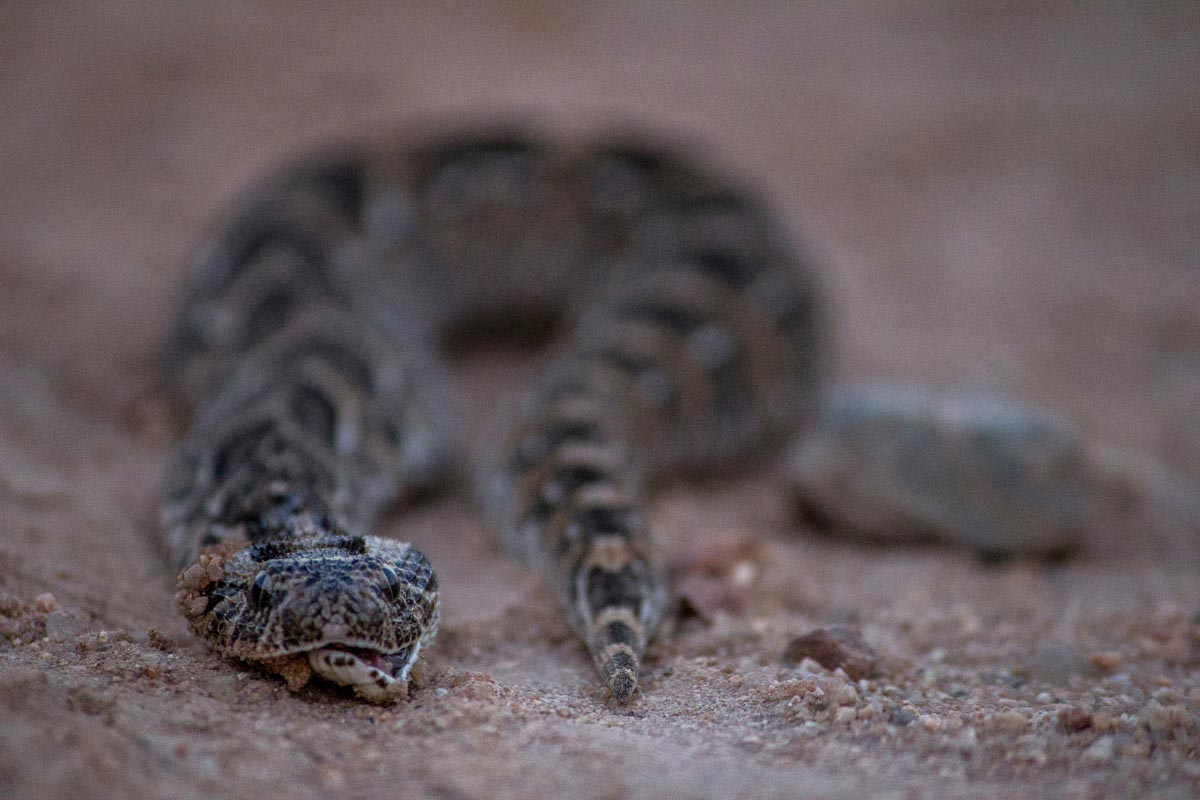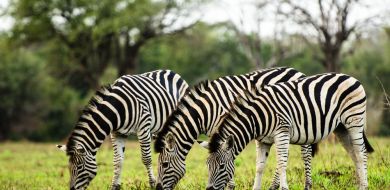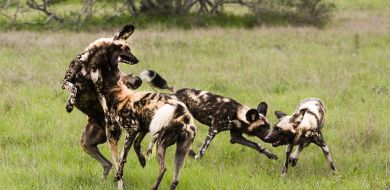Sabi Sabi Wild Facts: Puff Adder – Bitis Arietans
on Dec 14, 2014The heat of the summer months brings with it man's most feared reptile, the snake. It is actually a shame that these incredible creatures are the source of such fear, as if one was looking for physiological perfection, the snake would be a good place to start - it has remained unchanged for millions of years after all! There are many snakes to be found in the area around Sabi Sabi, although they are rarely seen due to their preference of remaining undetected. However, every so often, puff adders are seen on game drive in the evening and early morning, basking on the sand roads, enjoying the residual heat.
The name 'puff adder' stems from the snake's habit of inflating itself and hissing when threatened. The noise produced is a menacing hissing sound and should be construed as a strong warning! The snake itself is rather sluggish and generally moves in a rectilinear motion, or straight line (like a caterpillar), as opposed to the serpentine motion exhibited by most other snakes. It does however possess one of the fastest strikes of all snakes and should be respected at all times! It is easily recognised by its stumpy appearance, only growing to a maximum of about 1 meter in length, the chevron-like markings on its back and a large, triangular shaped head.

The puff adder is responsible for more bites (and therefore fatalities) in South Africa than any other snake, even though other snakes have higher venom yields. The reasons for this are simple: it is very adaptable, is found in multiple, varied habitats and it is one of the few lazy snakes. Snakes do not have ears but they are able to sense the vibrations caused by footsteps and will quickly disappear before their presence is even detected. The puff adder however, is a slow moving snake and prefers to rely on its brilliant camouflage to remain unseen. It is possible therefore, to find yourself in close proximity to the snake and should you accidently surprise it by treading on it for example, or put it in a position where it feels the need to defend itself, the rest is self-explanatory.

Snakes are often categorised by their tooth structure and the puff adders (in the viper family) have hinged front fangs. In a nutshell, they have abnormally large fangs at the front of the mouth that are so long that the only way they can be accommodated is for them to have a hinge, enabling them to fold out of the way of the mouth. This allows for a painful bite and deep penetration of the venom. The venom itself is known as 'cytotoxic' and manifests itself in severe swelling and cell destruction known as necrosis. The chances of death from the puff adder bite are small, however, and any fatalities that occur are most likely a result of poor medical care and secondary infection. A polyvalent anti-venom is available for treatment, although most symptoms will be treated as and when they manifest.
One of the most interesting facts about the puff adder is its apparent ability to produce live young. All reptiles produce eggs and whilst the puff adder does 'give birth' to living snakes, the process is deceptive. The eggs are in fact produced, but these eggs are carried within the mother during incubation and the young snakes hatch from the eggs before they emerge from her. This is known as ovi-vipipary and is fairly unusual within the animal kingdom. It is a wonderful means of avoiding predation of the eggs as many reptile eggs are sought out and eaten before the embryos ever have a chance to develop and hatch. This probably goes a long way in explaining the puff adder's large distribution and success as a species. The young puff adders, as with all snakes, are capable of delivering venom from a bite right from birth and should not be taken lightly. In fact, one has to be more careful with young snakes as they are more likely to feel threatened and also have less control over the amount of venom released, leading to massive doses being injected!

In short, the puff adder is a highly specialised and highly successful member of the ecosystem and whilst it is the source of much fear, as with all living creatures, it has its purpose. Its diet is varied including birds and insects; but perhaps its main food is rodents. Were it not for the presence of snakes, we would be overrun by rats and mice etc. So snakes are essential in maintaining a balance within the ecosystem. This is exactly the same scenario as with bats and spiders. They are also often feared animals, but they effectively control insect and mosquito populations. Love them or hate them, snakes fulfil their role in the environment with ruthless efficiency and have done so for millions of years. Fear is often a lack of understanding and if one looks deeper into the world of the serpents, one finds an organism close to evolutionary perfection. For those of you who still harbour some doubts, always remember that snakes are far more afraid of you than you are of them!






